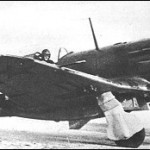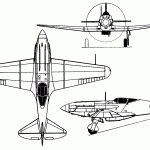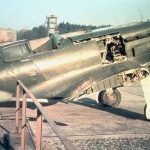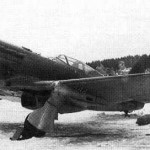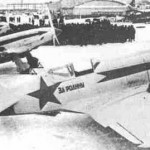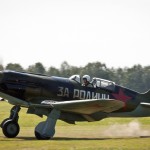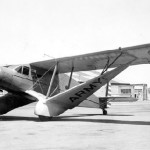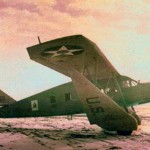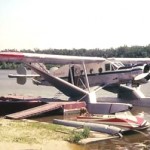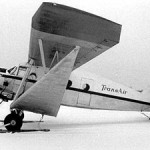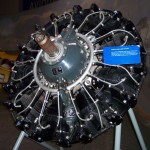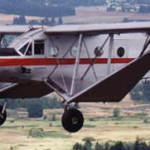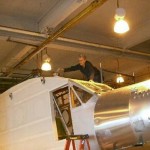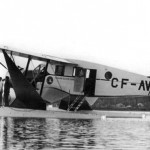
By the end of World War II, air forces around the world were aware that a new age of aviation was dawning: The Jet Age. In 1948, the newly-formed United States Air Force called out to designers for a radar-equipped jet interceptor to replace the piston-engine F-81 and F-82. The threat of war with the Soviet Union was already very real, and their Tupolev Tu-4 (a copy of the American B-29) was an intercontinental threat, in and of itself.
The Air Force needed a fast interceptor, that could fly at night and be able to detect incoming bombers on its own. Curtiss-Wright designed the XF-87 “Blackhawk” to fill this role, but it was scrapped for poor performance. Lockheed was asked to submit a design on an emergency basis, so the company took aspects of its successful TF-80C jet trainer. The TF-80, later called the T-33 “Shooting Star” was a two-seat training version of the F-80 “Shooting Star,” and the prototype plane they would give birth to would share 75 percent of the original TF-80’s parts. Notably, the engine was upgraded from the J-33 turbojet seen on the T-33 to the Allison J-33-A-33 afterburning turbojet. The extra power was required due to the added weight of electronic equipment, including the radar and the Sperry A-1C gunsight.
This made the F-94 the first American production jet that used an afterburner.
The first production F-94, the F-94A variant was armed by four .50 in. M3 Browning machine guns in the fuselage. Its two wingtip fuel tanks could be replaced by 1,000 bombs, making the F-94 a versatile fighter-bomber. in 1951, the F-94B version entered service with upgraded electronics, engine, and an Instrument Landing System.
The F-94C was the first variant to bear the “Starfire” name, but when it went into service, the entire F-94 family adopted the moniker. The “C” was a very different airplane, so different that Air Force officially were originally going to call it the F-97. The F-94C had its guns replaced with rockets, wings thinned out, and tail surface swept back. The engine was swapped out for a Pratt & Whitney J48, which gave a big increase in power, especially when the afterburner was fired up.
In March 1951, the Air Force sent F-94Bs into combat over Korea. During the Conflict, an F-94 was credited with the world’s first jet-versus-jet air combat victory, when it defeated a MiG-15 with guns. Only one F-94 was officially lost in combat, though a few others crashed during the deployment.
Despite its combat successes, the F-94 was retired from USAF service in 1959, as a flurry of new and more advanced jet fighters came into production. They remained in Air National Guard service until 1960.
Specifications
General (F-94C)
Crew: 2
Length: 44 ft 6 in
Wingspan: 42 ft 5 in
Height: 14 ft 11 in
Empty weight: 12,708 lb
Engine One Pratt & Whitney J48-P-5 turbojet, putting out 6,350 lbf (8,750 lbf with afterburner)
Performance (F-94C)
Maximum speed: 640 mph
Combat Range: 805 mi
Ferry range: 1,275 mi
Ceiling: 51,400 ft
Thrust/weight: 0.48
Armament
F-94A/B: Four .50 in. M3 Browning machine guns
F-94C: 24 or 48 2.75 in (70 mm) Folding-Fin aerial Rockets
Wingtip fuel tanks could be replaced with 1,000 lb. bombs.
F-94 “Starfire” Photo Gallery
Essential Reading
Online Resources
- Jet Pilot Overseas blog — Excellent, rare photos of pilots deployed, flying the F-94
- National Museum of the US Air Force Factsheet
- ACIG.org — Great photos
- Aviastar.org — Great comments from members, with war stories







































